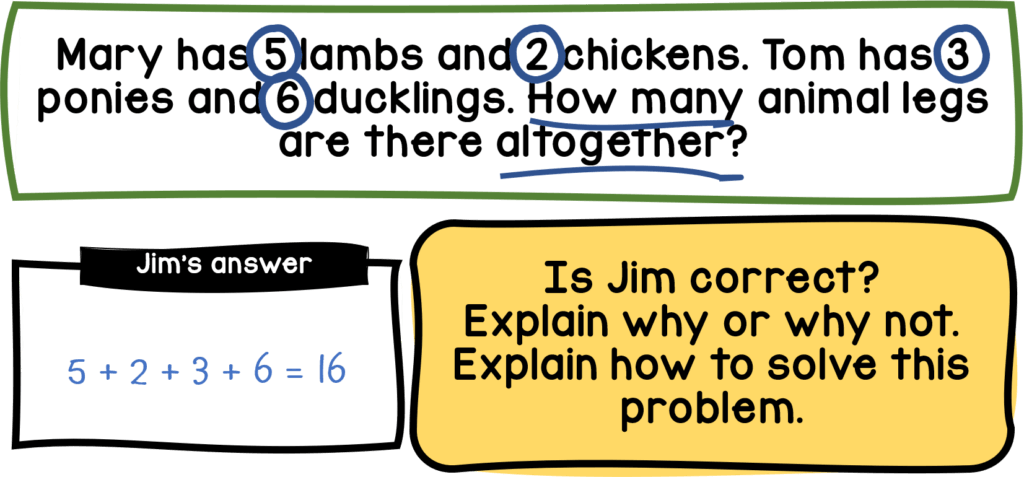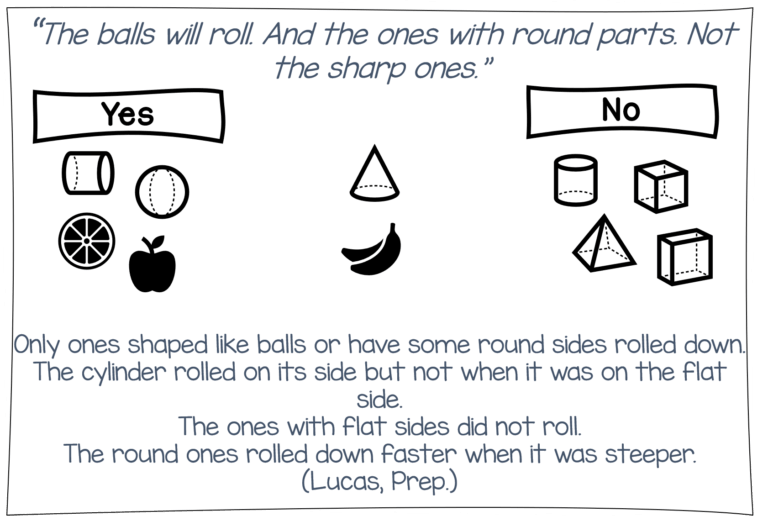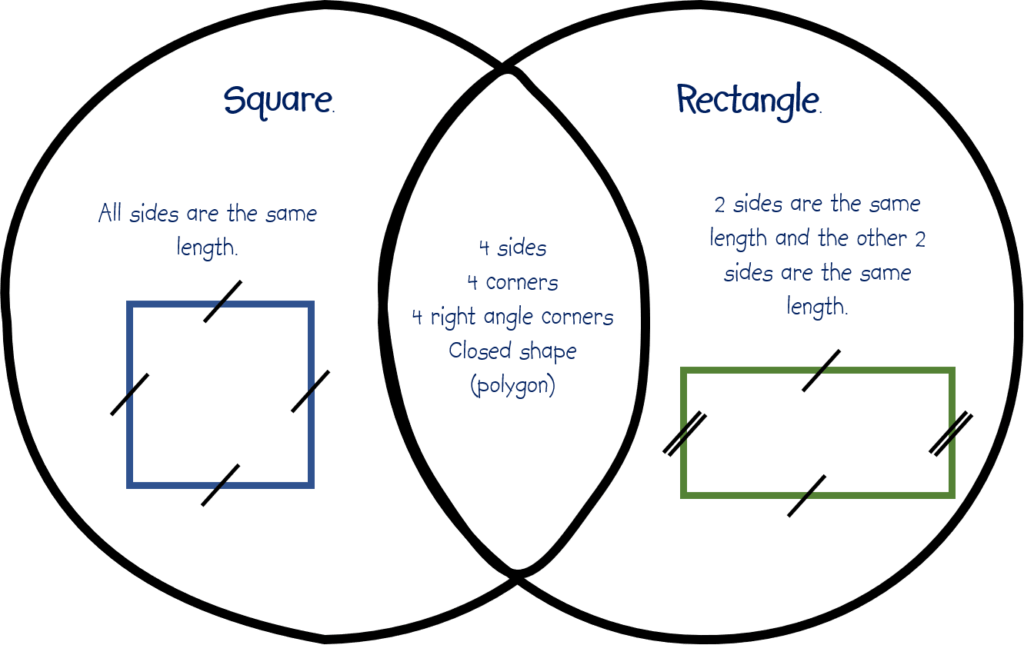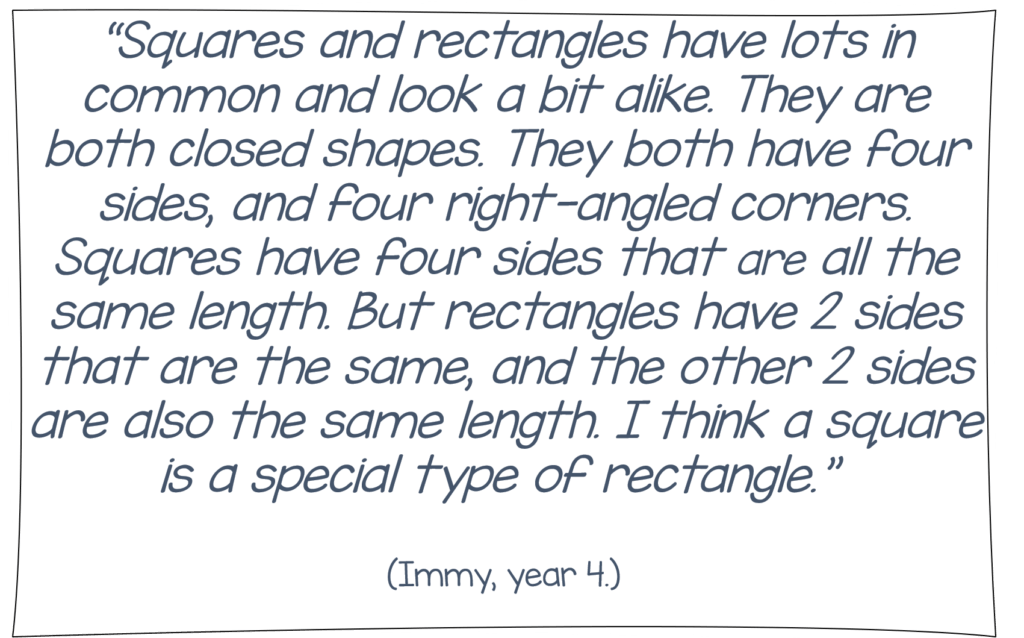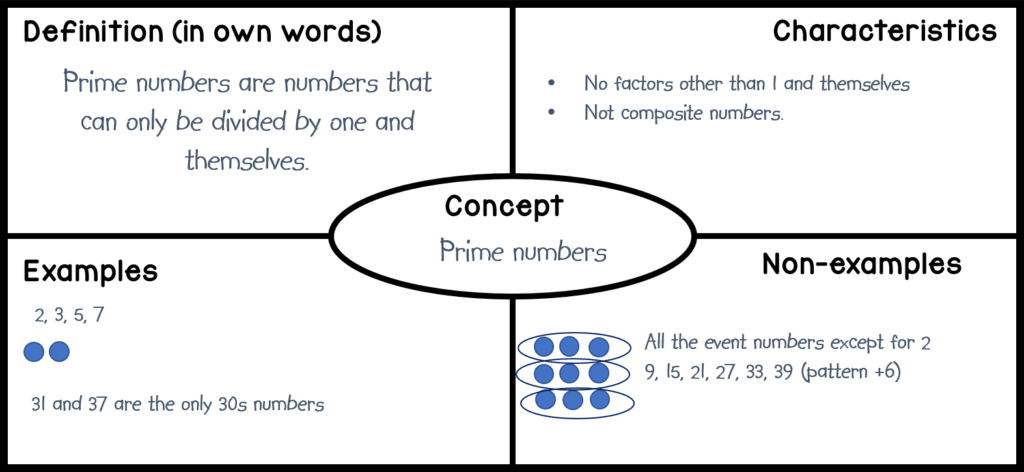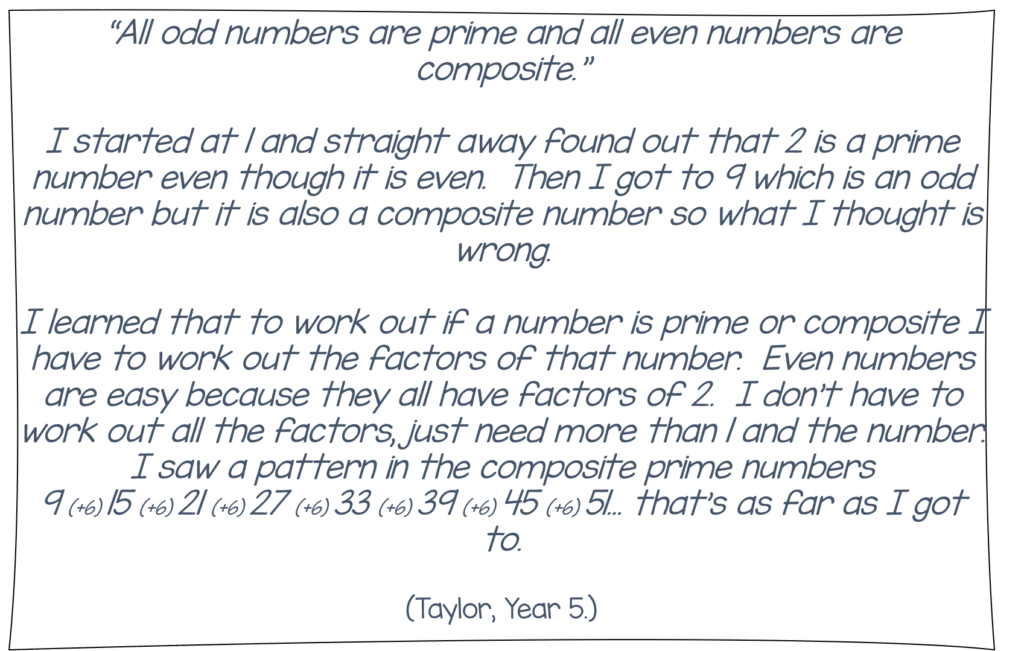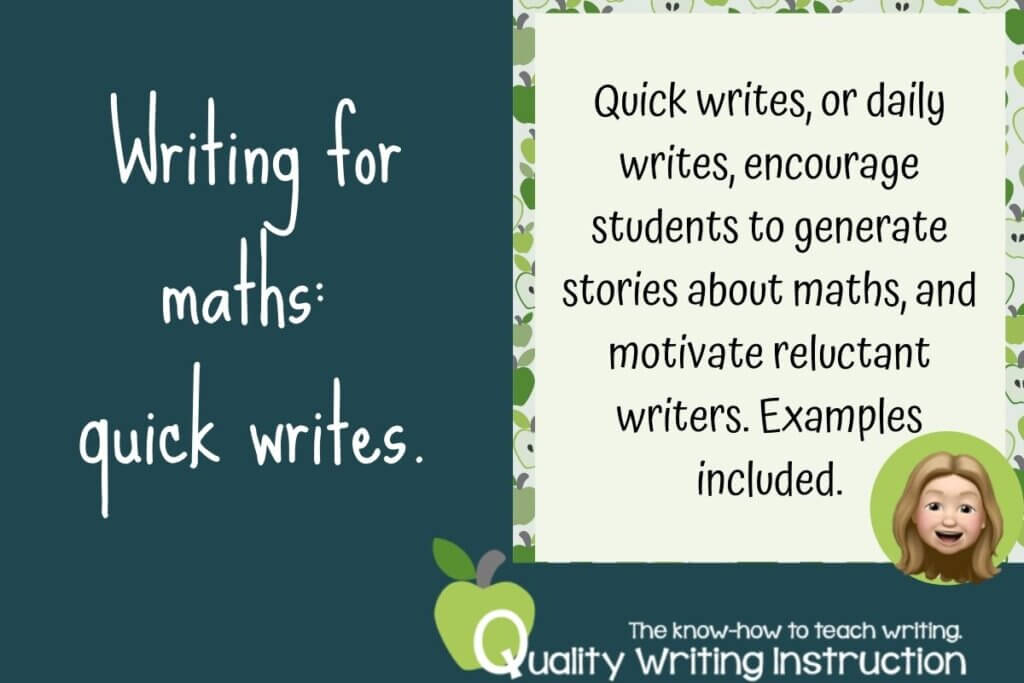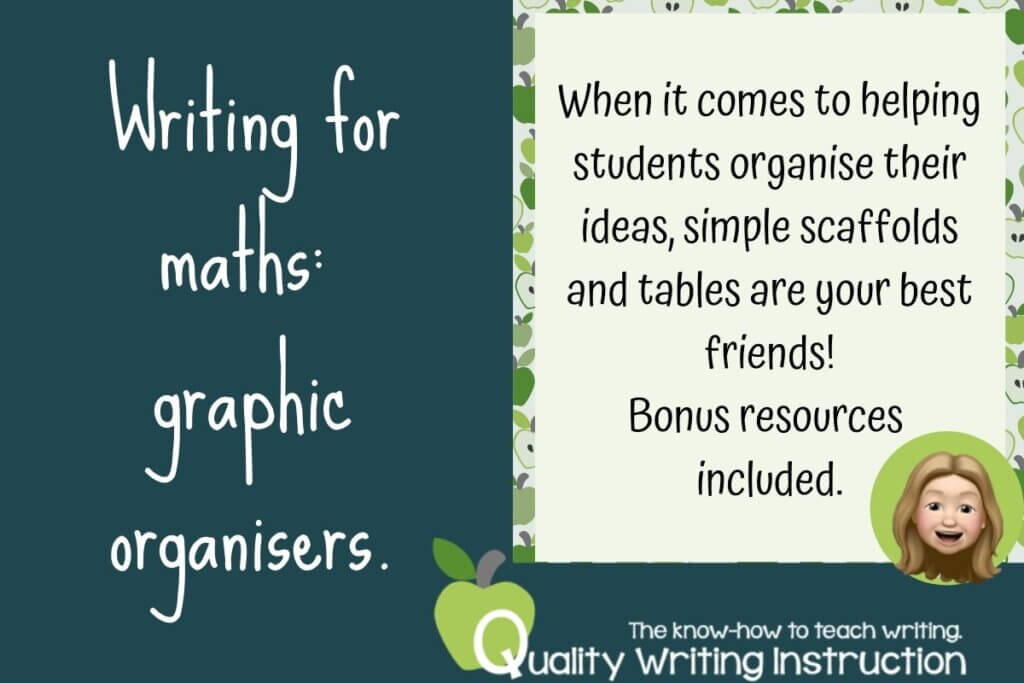How to get students writing in maths: explanations

By KELLIE
Students are often asked to explain their thinking or explain their learning in maths. To be successful, they must be taught how to write mathematical explanations to meet the purpose and audience.
In this blog, we explore how to support the writing of procedural and reflective explanations in maths with examples from both the early and middle years of primary school.
Teach students how to write the text
When teaching students how to write explanations in maths scaffold their learning just as you would for any piece of writing.
Explicitly teach the text structure, purpose and audience for the explanations they are composing. For example, students should know that explanations provide you (their audience) with information on how they are thinking and working out mathematically and ensure they know what your expectations are.
Scaffold their learning with anchor charts, easy to follow processes, and examples that students work through collaboratively and independently. If you are looking for some ideas, there are supporting resources to download at the end of this blog.
Students require multiple exposures to examples of maths explanations before they can compose them successfully.
Writing to explain processes
Students are often required to write explanations in maths to explain the processes they followed to work through a task, or to explain their thinking.
Again, explicitly teach how to write this form of explanation and provide models of examples for students to refer to.
- What are you learning about?
- What steps did you take to solve the problem?
- How did you check?
Allow students to plan and write procedural explanations in a number of ways:
- design a flow chart
- write a step by step process (First, Then, Next, Finally…)
- illustrate each step
- tell someone the steps
If possible, provide time for them to test the accuracy of their explanation by having other students follow the process and offer feedback.
Encourage the use of diagrams and illustrations to support their thinking.
Another simple and fun way to encourage procedural explanations is to ask students to write a note for a peer who missed the lesson! Challenge them to explain the processes and procedures as clearly as possible.
Writing to explain new learning
When asked to write an explanation of new learning, students benefit from question prompts or sentence starters to help them to organise their thinking.
Generalised questions such as these can be adapted to many purposes.
- What are you learning about?
- What did you think (before)?
- What did you find out? What did you observe?
- What do you think now?
Combine these with graphic organisers, column-notes, or tables for an effective way for students to organise their thinking and plan before they start writing.
Some practical examples
The guiding questions listed are easily adapted to any task and any year level.
The first example is a prep student’s response to a mathematical inquiry task.
- What did you think (before you started)?
The balls will roll. And the ones with round parts. Not the sharp ones.
- What did you observe?
Only ones shaped like balls or have some round sides rolled down. The cylinder rolled on its side but not when it was on the flat side. The ones with flat sides did not roll.
- What do you think now?
The ones with flat sides do not roll. The round ones rolled down faster when it was steeper.
Explaining observations in year 4
In this example, the student has used a Venn diagram to compare the features of squares and rectangles.
The student has then composed a short explanation of what they have learned from this comparison. Their explanation follows the simple structure:
- What did you think (before you started)?
Squares and rectangles have lots in common and look a bit alike.
- What did you observe?
They are both closed shapes. They both have four sides and four right-angled corners. Squares have four sides that are all the same length. But rectangles have 2 sides that are the same, and the other 2 sides are also the same length.
- What do you think now?
I think a square is a special type of rectangle.
Please note all examples have been transcribed as the original student responses.
Explaining the testing of theories or ideas in year 5
In this example, the student was testing their theory that “all odd numbers are prime, and all even numbers are composite.” Students were asked to test their theory, and record their observations using a Frayer model. They were then asked to write an explanation of what they had observed, and how this had impacted on their learning.
Because of the personalised nature of the task, the use of I statements was considered acceptable.
In this explanation, the student quickly addresses a misconception they had which became apparent almost immediately.
When discussing their new learning, the student noted additional observations made.
Remember, when teaching students how to write mathematical explanations:
- use examples as models
- use scaffolds and prompts such as sentence starters and questions
- graphic organisers are your students’ best friends
- encourage students to draw and illustrate their thinking
- allow students to organise their thinking before sharing or writing
- use students’ writing as formative assessment to inform next steps for teaching
We have collected sentence starters, question prompts and graphic organisers to support the teaching of writing explanations in maths. The examples explored in this blog are included too.
To share your thoughts and hear how other teachers teach writing in maths, join us in The Lounge.
“The Lounge” is Quality Writing Instruction’s Facebook group, where you can share ideas and get support from a fabulous group of like-minded teachers.
